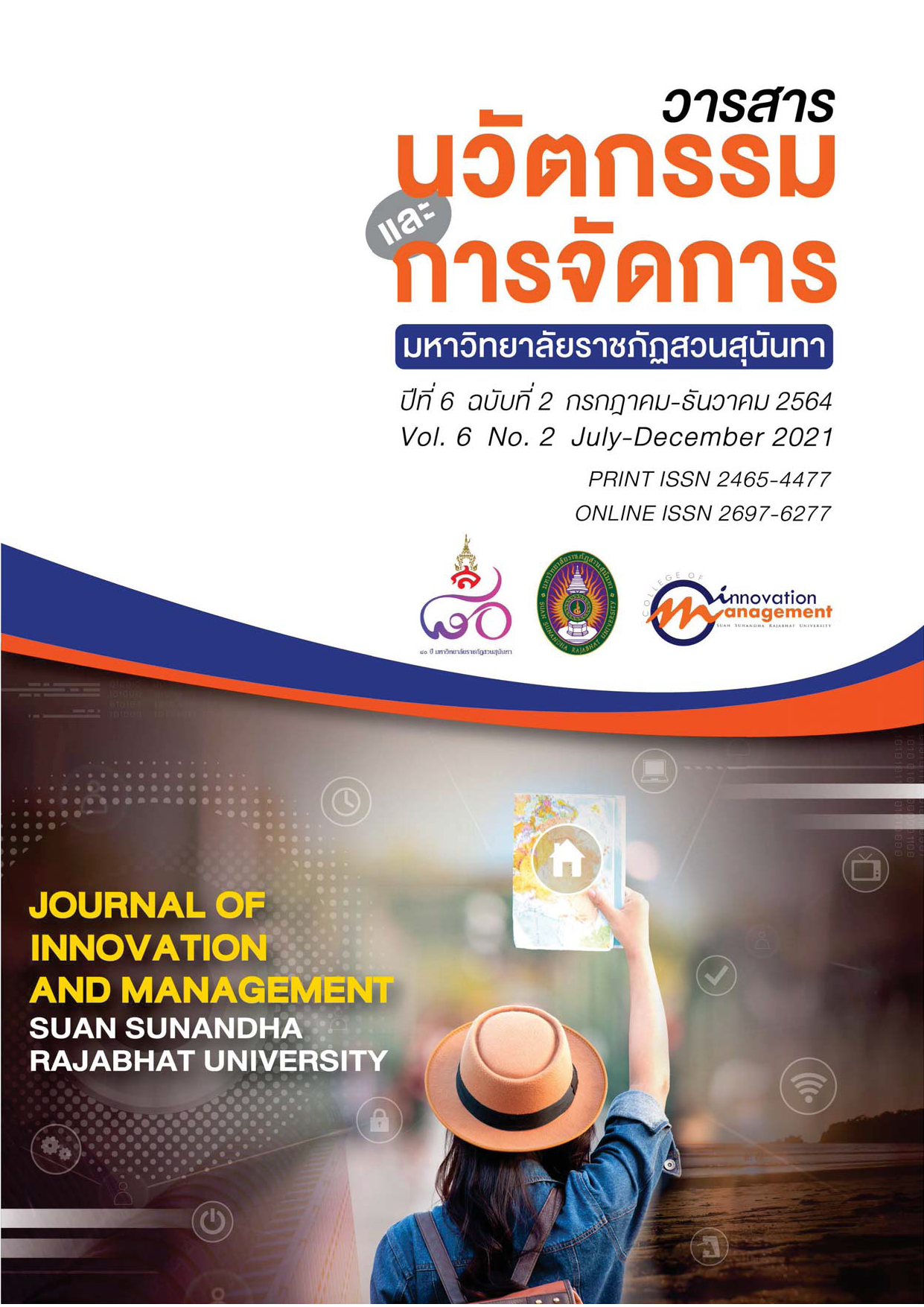The Model Adaptation Behavior of Community-Based Tourism in Samutsongkhram Province
Keywords:
Adaptation Behavior, Community-based Tourism, TouristAbstract
The research aimed to (1) study the touristic adaptation behaviors and the expectations of potential tourism and (2) compared touristic adaptation behaviors and the expectations of potential tourism in community-based tourism in Samutsongkhram province. This research is quantitative research. The sample 385 tourists who travel in Samut Songkhram on January 2020–March 2021. The statistics used in this research comprised (1) descriptive analysis (percentage, mean and standard deviation) and (2) inferential statistics (t-test and one-way Analysis of Variance). The study showed that most of tourist purpose as for leisure, family members-travelling and they like to travel to their destination by private cars. Travelling expenses are about 1,001–2,000 baht per trip and taking 1 day. The expectations of potential tourism overall were at the high level when classified in each aspect by sorting the average, namely Hygiene and Safety Management was at the high level. Hypothesis testing found that 1) tourists with different demographic characteristics will affect different tourist adaptation behaviors significance at the level of 0.05. 2) tourists with different demographic characteristics will affect different expectations of potential tourism significance at the level of 0.05.
References
Chen, Z. (2017). Expectations and Perceptions of Chinese Tourists towards tourism in Muang District of Chiang Mai Province.
Independent Study of the Degree of Master of Business Administration. Chiang Mai: Chiang Mai Rajabhat University. (in Thai)
Cochran, W.G. (1977). Sampling Techniques. 2nd ed. New York: Wiley.
Cronbach, L. J. (1970). Essentials of psychological testing. 3rd ed. New York: Harper and Raw.
Hair, J. F., Black, B., Babin, B., Anderson, R. E., and Tatham, R. L. (2006). Multivariate Data Analysis. 6th ed. Upper Saddle River, NJ: Pearson Prentice Hall.
Kaewchoo, P. (2020). Factors Influencing Change in New Normal Tourism Behavior After Covid-19. [Online]. Retrieved from https://mmm.ru.ac.th/MMM/IS/vlt15-1/6114993619.pdf (in Thai)
Kurež, B. and Prevolšek, B. (2015). Influence of Security Threats on Tourism Destination Development. TIMS Acta, 9(2), 159-168.
Ministry of Tourism and Sports. (2020). Impact of Covid-19 on Thailand Tourism. Tourism Economic Review, 1(4), 64-65. (in Thai)
Office of The National Economic and Social Development. (2017). The Twelfth National Economic and Social Development Plan (2017-2021). [Online]. Retrieved from https://www.nesdc.go.th/ewt_w3c/ewt_dl_link.php?nid=9641 (in Thai)
Phayakvichien, P. (2007). Local Cultural Community Based Tourism in Thailand. eTAT Tourism Journal, 1, 1 – 7. (in Thai)
Statistical Office Samutsongkhram. (2020). Samutsongkhram Provincial Statistical Report. [Online]. Retrieved from http://samutsongkhram.nso.go.th/index.php/local-report/1002--63. (in Thai)
Tangtenglam,S. and Pongpanich, A. (2021). Factors Affecting the Selection of New normal Thai Travel. Journal of Multidisciplinary in Humanities and Social Sciences, 4(1), 12-24. (in Thai)
Tourism Authority of Thailand. (2020). Amazing Thailand Safety and Health Administration (SHA). [Online]. Retrieved from https://www.thailandsha.com/index (in Thai)
Wutisilp, C. and Phasunon, P. (2015). Expectation and Satisfaction in Visiting Homestayof Amphawa, Samut Songkram. Veridian E-Journal Silpakorn University, 8(2), 2066 -2079. (in Thai)
Downloads
Published
How to Cite
Issue
Section
License
Copyright (c) 2021 Journal of Innovation and Management

This work is licensed under a Creative Commons Attribution-NonCommercial-NoDerivatives 4.0 International License.
See Publication Ethics https://so03.tci-thaijo.org/index.php/journalcim/Ethics






